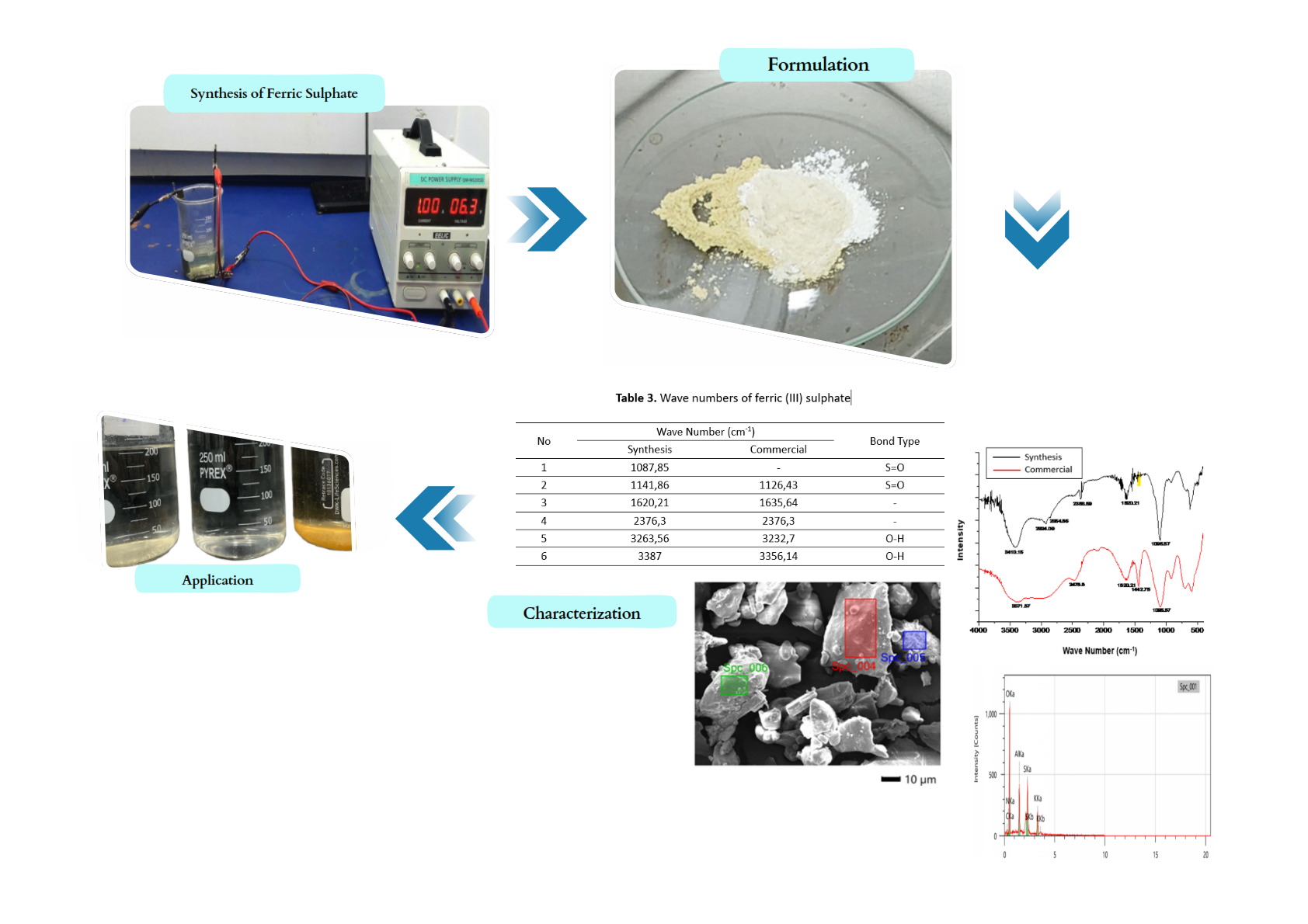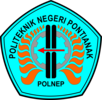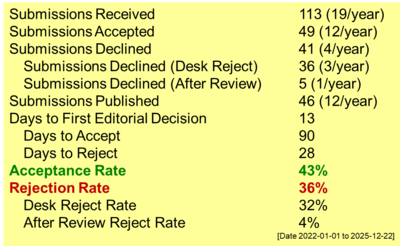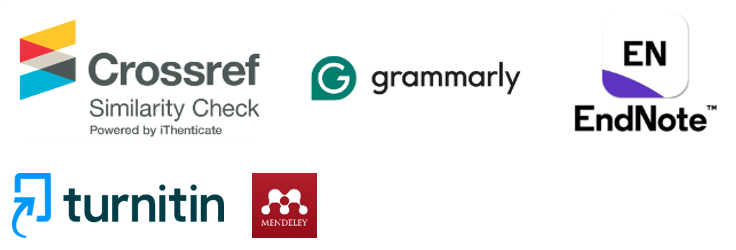Formulation of Digested Beverage Cans and Iron Plate Wastes as a Coagulant for Adequate Hygiene of Fresh River Water
DOI:
https://doi.org/10.55749/ijcs.v4i1.57Keywords:
Alum, Coagulant, Ferric Sulphate, Hygiene Sanitation, Metal DigestionAbstract
In terms of hygiene and sanitation, ensuring the availability of qualified water for those purposes remains challenging to perform under certain conditions. Accordingly, efforts to provide simple water processing technology are ongoing and innovatively developed. This study displayed an innovative approach to producing coagulants for water processing by utilizing metal salts obtained synthetically from used beverage cans and iron plates through the electrolysis principle and characterized using Fourier-transform infrared spectroscopy (FTIR), X-ray diffraction (XRD), and Scanning Electron Microscopy - The Energy Dispersive X-ray (SEM-EDX), subsequently. After mixing with calcium hypochlorite and adding to water sample, subsequently, the coagulant showed the ability to reduce the turbidity level and several categories of impurities, i.e., nitrate, nitrite, dissolved Manganese, Cr6+ ion, and microbial levels. Future research and development in formulating coagulants derived from digested beverage cans and iron plate wastes hold significant potential to advance sustainable and efficient water treatment technologies, ensuring improved hygienic quality of fresh river water while contributing to waste valorization and environmental protection.
References
Agustinus, N., Fatimah, Fauziah, W.F.N., Sihombing, R.P. 2020. Conversion of iron rust to iron(III) sulfate and its utilization as textile dye adsorption. KOVALEN: Jurnal Riset Kimia. 6(3). 177–183. doi: https://doi.org/10.22487/kovalen.2020.v6.i3.15308.
Basuki, R., Apriliyanto, Y.B., Stiawan, E., Pradipta, A.R., Rusdiarso, B., & Putra, B.R. 2025. Magnetic hybrid chitin-horse manure humic acid for optimized Cd(II) and Pb(II) adsorption from aquatic environment. Case Stud. Chem. Environ. Eng., 11. 101138. doi: https://doi.org/10.1016/j.cscee.2025.101138.
Nugroho, W.D., Samadikun, B.P., Putera, I.B.P.A.S., Azzaimi, M.T.F., & Purba, Y.R.S. 2024. Study of community participation in community-based clean water distribution movement in Semarang City. IOP Conf. Ser.: Earth Environ. Sci. 1414(1). 012075. doi: https://doi.org/10.1088/1755-1315/1414/1/012075.
Robertson, G.L. 2021. Recycling of aseptic beverage cartons: A review. Recycling. 6(1). 20. doi: https://doi.org/10.3390/recycling6010020.
Sheng, D.P.W., Bilad, M.R., & Shamsuddin, N. 2023. Assessment and optimization of coagulation process in water treatment plant: A review. ASEAN J. Sci. Eng. 3(1). 79-100.
Ridwan, M.T., Nahar, N., Irwan, I., & Hasanah, U. 2025. Application of the coagulation jar test method for the treatment of coal wastewater in industrial wastewater management. Jurnal Teknologi. 25(1). 50-55.
Bader, A.C., Hussein, H.J., & Jabar, M.T. 2022. BOD: COD ratio as indicator for wastewater and industrial water pollution. Int. J. Spec. Educ. 37(3). 2164-2171.
Damayanti, A., Nurfadillah, Afriani, S., Hasri, I., Royanni, T., Harahap, P.D., Mellanie, K., & Ismarica. 2022. Structure of macrozoobenthos community in floating net cages and non-floating net cages in laut tawar lake as an effort to manage aquatic resources. Jurnal Ilmu Perairan dan Perikanan. 4(2). 22–31. doi: https://doi.org/10.55542/mahseer.v4i2.241.
Daramusseng, A., & Syamsir, S. 2021. Study of Karang Mumus river water quality reviewed from Escherichia coli parameters for sanitation hygiene. J. Kesehat. Lingkung. Indones. 20(1). 1–6. doi: https://doi.org/10.14710/jkli.20.1.1-6.
Ahmed, A.S., Hassan, A.M., & Nour, M.H. 2021. Utilization of chitosan extracted from shrimp shell waste in wastewater treatment as low cost biosorbent. Egypt. J. Chem. 64(2). 981-988. doi: https://doi.org/10.21608/ejchem.2020.43166.2871.
Wahyudi, R., Fauzi, A.M., Budiarti, S., & Sintawardani, N. 2024. Water quality assessment and determination of water quality status in kapuas river for sustainable water resources, sanggau regency, west kalimantan. IOP Conf. Ser.: Earth Environ. Sci. 1359(1). 012116. doi: https://doi.org/10.1088/1755-1315/1359/1/012116.
Putra, E.I., & Aulia, J. 2023. The effect of addition of epoxy primer on the rate of corrosion of low carbon steel soaked in a circulation of calcium hypochlorite solution. Jurnal Teknologi dan Vokasi. 1(2). 39–45. doi: https://doi.org/10.21063/jtv.2023.1.2.5.
Elakiadra, E., Budijono, & Harahap, S. (2021). Testing of lime, alum and PAC (poly aluminum chloride) formulations to improve the quality of peat water in bengkalis, siak and kampar regencies. Jurnal Sumberdaya dan Lingkungan Akuatik. 2(1). 192–203.
Sadare, O., Oke, D., Olawuni, O., Olayiwola, I., & Moothi, K. 2024. Modelling and optimization of mmebrane process for removal of biologic (pathogens) from water and wastewater: current perspective and challenges. Heliyon. 10(9). e29864. doi: https://doi.org/10.1016/j.heliyon.2024.e29864.
Iwuozor, K.O. 2019. Prospects and challenges of using coagulation-flocculation method in the treatment of effluents. Adv. J. Chem. A. 2(2). 105-127.
Faisal, M., & Atmaja, D.M. 2019. Water quality at the spring source at taman temple, sanggalangit village as a source of drinking water based on the storet method. Jurnal Pendidikan Geografi Undiksha. 7(2). 7484. doi: https://doi.org/10.23887/jjpg.v7i2.2069.
Somasundaram, D., Zhang, F., Wang, S., Ye, H., Zhang, Z., & Zhang, B. 2020. Learning vector quantization neural network for surface water extraction from Landsat OLI images. J. Appl. Remote Sens. 14(3). 032605-032605. doi: https://doi.org/10.1117/1.JRS.14.032605.
Hanisa, E., Nugraha, W.D., & Sarminingsih, A. (2017). Penentuan status mutu air sungai berdasarkan metode indekskualitas air–national sanitation foundation (ika-nsf) sebagai pengendalian kualitas lingkungan (studi kasus: sungai gelis, kabupaten kudus, jawa tengah). Jurnal Teknik Lingkungan. 6(1). 1-15.
Parveen, N., Chowdhury, S., & Goel, S. 2022. Environmental impacts of the widespread use of chlorine-based disinfectants during the COVID-19 pandemic. Environ. Sci. Pollut. Res. Int. 29(57). 85742-85760. doi: https://doi.org/10.1007/s11356-021-18316-2.
Kusniawati, E., Pratiwi, I., & Antari, D. G. V. (2023). The utilization of biocoagulant from melon seeds powder towards the decrease in pH, TSS and TDS in tofu industrial liquid waste. Jurnal Cakrawala Ilmiah. 2(7). 3099-3108. doi: https://doi.org/10.53625/jcijurnalcakrawalailmiah.v2i7.5395.
Afiffa, M., & Warmadewanthi, I.D.A.A. 2024. Waste lubricant oil management: a review of technical aspects and regulatory compliance:(study case coal mining PT X). Asian Journal of Engineering, Social and Health. 3(6). 1300-1312. doi: https://doi.org/10.46799/ajesh.v3i6.346.
Sotomayor, G., Alvarado, A., Romero, J., López, C., Aguilar, M., Forio, M.A.E., & Goethals, P.L. 2024. Limnological characteristics and relationships with primary productivity in two high andean hydroelectric reservoirs in ecuador. Water. 16(14). 2012. doi: https://doi.org/10.3390/w16142012.
Marlinda, L., Malikhah, W., Ishartono, B., & Basuki, R. 2023. Magnetically separable humic acid-chitin based adsorbent as Pb(II) uptake in synthetic wastewater. Indones. J. Chem. Stud. 2(1). 13-21. doi: https://doi.org/10.55749/ijcs.v2i1.22.
Jiao, R., Sun, H., Xu, S., He, Y., Xu, H., & Wang, D. 2022. Aggregation, settling characteristics and destabilization mechanisms of nano-particles under different conditions. Sci.Total Environ. 827. 154228. doi: https://doi.org/10.1016/j.scitotenv.2022.154228.
Ngatin, A., Fatimah, Fauziah, W.F.N., & Sihombing, R.P. 2020. Conversion of iron rust into iron(III) sulfate and its use as textile dye adsorption. KOVALEN: Jurnal Riset Kimia, 6(3), 177–183. doi: https://doi.org/10.22487/kovalen.2020.v6.i3.15308.
Hamidi, E.A.Z., Effendi, M.R., & Shiddiq, H.A. 2018. Design and implementation supervisory control and data acquisition (SCADA) of sedimentation process of water treatment plant (WTP) by using Raspberry PI 3 B. 2018 4th International Conference on Wireless and Telematics (ICWT). 1-7. doi: https://doi.org/10.1109/ICWT.2018.8527736.
Achite, M., Samadianfard, S., Elshaboury, N., & Sharafi, M. 2023. Modeling and optimization of coagulant dosage in water treatment plants using hybridized random forest model with genetic algorithm optimization. Environ. Dev. Sustain. 25(10). 11189-11207. doi: https://doi.org/10.1007/s10668-022-02523-z.
Ovuoraye, P.E., Okpala, L.C., Ugonabo, V.I., & Nwokocha, G.F. 2021. Clarification efficacy of eggshell and aluminum base coagulant for the removal of total suspended solids (TSS) from cosmetics wastewater by coag-flocculation. Chem. Pap. 75(9). 4759-4777. doi: https://doi.org/10.1007/s11696-021-01703-x.
Ribeiro, T.F., Trevisan, V., Fabregat, T.E.H.P., & Skoronski, E. 2022. Characterization of a byproduct generated by the treatment of water from a biofloc technology system using a plant tannin-based coagulant. Aquacultural Engineering, 99. 102297. doi: https://doi.org/10.1016/j.aquaeng.2022.102297.
Aphirta, S., Ratnaningsih, R., Hadisoebroto, R., Yusuf, A.M., & Gantara, H. 2023. Determination of the optimum organic coagulants dosage in tofu industrial wastewater treatment. IOP Conf. Ser.: Earth Environ. Sci. 1203(1). 012049. doi: https://doi.org/10.1088/1755-1315/1203/1/012049.
Shokrollahzadeh, S., Golmohammad, F., Naseri, N., Shokouhi, H., & Arman-Mehr, M. 2012. Chemical oxidation for removal of hydrocarbons from gas-field produced water. Procedia Eng. 42. 942–947. doi: https://doi.org/10.1016/j.proeng.2012.07.487.
Aeni, H. F. R., Kristanti, I., Rohayani, Y., & Banowati, L. (2023). The Relationship between Sanitary Hygiene and Coliform Bacteria Contamination at Refill Drinking Water Depots. Consilium Sanitatis: Journal of Health Science and Policy. 1(3). 171-187. doi: https://doi.org/10.56855/jhsp.v1i3.612.
Utari, K.M.I., & Mirwan, M. 2023. The Effect of Impeller Shape on the Coagulation Flocculation Process on Flow Patterns and Removal TSS. INSOLOGI: Jurnal Sains dan Teknologi. 2(4). 824–833. doi: https://doi.org/10.55123/insologi.v2i4.2483.
Lestari, D.V., & Triwahyuni, A. 2021. Analisa status mutu air pada musim kemarau berdasarkan metode indeks pencemaran di tukad yeh poh, kabupaten Badung. Jurnal Ecocentrism. 1(1). 25-34. doi: https://doi.org/10.36733/jeco.v1i1.1749.
Eang, K.E., Igarashi, T., Kondo, M., Nakatani, T., Tabelin, C.B., & Fujinaga, R. 2018. Groundwater monitoring of an open pit limestone quarry: Water-rock interaction and mixing estimation within the rock layers by geochemical and statistical analyses. Int. J. Min. Sci. Technol. 28(6). 849-857. doi: https://doi.org/10.1016/j.ijmst.2018.04.002.
Widiantara, I.K., & Putra, E.P. 2022. Determination of the water quality status of tukad mati from north kuta to south kuta based on the pollution index method. Jurnal Ecocentrism. 2(1). 1–5. doi: https://doi.org/10.36733/jeco.v2i1.3653.
Monney, I., Buamah, R., Donkor, E.A., Etuaful, R., Nota, H.K., & Ijzer, H. 2019. Treating waste with waste: the potential of synthesized alum from bauxite waste for treating car wash wastewater for reuse. Environ. Sci. Pollut. Res. 26. 12755-12764. doi: https://doi.org/10.1007/s11356-019-04730-0.
Chen, C., Yan, X., Yoza, B.A., Zhou, T., Li, Y., Zhan, Y., Wang, K., & Li, Q.X. 2018. Efficiencies and mechanisms of ZSM5 zeolites loaded with cerium, iron, or manganese oxides for catalytic ozonation of nitrobenzene in water. Sci. Total Environ. 612. 1424-1432. doi: https://doi.org/10.1016/j.scitotenv.2017.09.019

Downloads
Published
How to Cite
Issue
Section
License
Copyright (c) 2025 Indonesian Journal of Chemical Studies

This work is licensed under a Creative Commons Attribution-ShareAlike 4.0 International License.






















